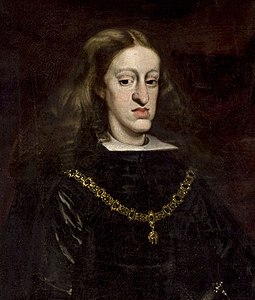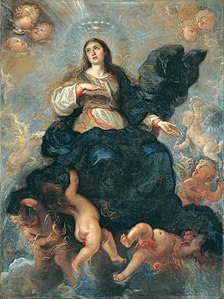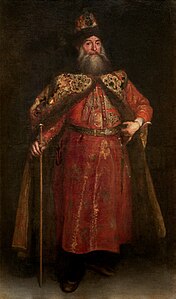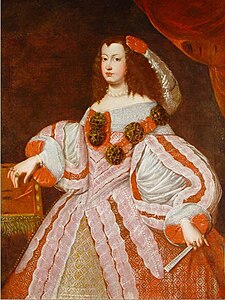Juan Carreño de Miranda
Juan Carreño de Miranda | |
|---|---|
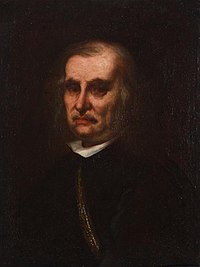 Self-portrait | |
| Born | Juan Carreño de Miranda 25 March 1614 |
| Died | 3 October 1685 (aged 71) |
| Nationality | Spanish |
| Known for | Painting |
Juan Carreño de Miranda (25 March 1614 — 3 October 1685) was a Spanish painter of the Baroque period.
Biography
[edit]Born in Avilés in Asturias, son of a painter with the same name, Juan Carreño de Miranda. His family moved to Madrid in 1623, and he trained in Madrid during the late 1620s as an apprentice to Pedro de las Cuevas and Bartolomé Román. He came to the notice of Velázquez for his work in the cloister of Doña María de Aragón and in the Church of Our Lady of the Rosary (Iglesia de la Virgen del Rosario), Marlofa, La Joyosa.[1]
In 1658, Carreño was hired as an assistant on a royal commission to paint frescoes in the Alcázar of Madrid; later destroyed in the fire of 1734. In 1671, upon the death of Sebastián de Herrera, he was appointed court painter to the queen (pintor de cámara) and began to paint primarily portraits. He refused to be knighted in the Order of Santiago, saying "Painting needs no honors, it can give them to the whole world". He is mainly recalled as a painter of portraits. His main pupils were Mateo Cerezo, Juan Martín Cabezalero, José Jiménez Donoso, and José de Ledesma.[2] He died in Madrid.
Noble by descent, he had an understanding of the workings and psychology of the royal court as no painter before him, making his portraits of the Spanish royal family in an unprecedented documentary fashion. Most of his work are portraits of the royal family and court, though there are some altarpieces, early works commissioned mainly by the church.
Selected works
[edit]- Charles II of Spain c. 1685
- Claudia Felicitas of Austria
- The Assumption of the Virgin
- Portrait of the Duke of Pastrana (1649–1693)
- Charles II of Spain c. 1676
- Queen Mariana of Austria
- Inés de Zúñiga, Countess of Monterrey
- Penitent Mary Magdalene. Real Academia de Bellas Artes de San Fernando. Madrid. Spain.
References
[edit]- ^ "Resultado de la búsqueda". Documentos y Archivos de Aragón (in Aragonese). Retrieved 20 November 2016.
- ^ An account of the lives and works of the most eminent Spanish painters, sculptors and architects
External links
[edit]- Scholarly articles about Juan Carreño de Miranda both in web and PDF @ the Spanish Old Masters Gallery
- Catholic Encyclopedia article
- ARTEHISTORIA
- Juan Carreño de Miranda on artcyclopedia
- Jusepe de Ribera, 1591-1652, an exhibition catalog from The Metropolitan Museum of Art (fully available online as PDF), which contains material on de Miranda (see index)
- Velázquez , an exhibition catalog from The Metropolitan Museum of Art (fully available online as PDF), which contains material on de Miranda (see index)


 French
French Deutsch
Deutsch